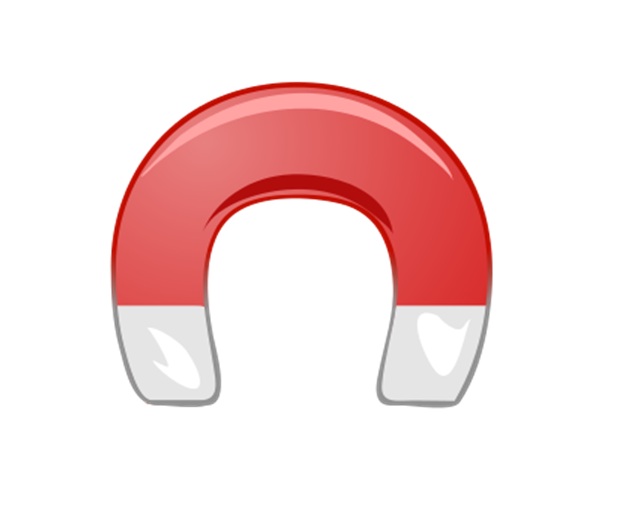What Are Magnets?
What can move metal objects and even make them dangle in the air without touching them? Magnets! You have probably had fun moving paper clips or nails around with a magnet and were excited because it seemed like magic, and you may think that Magnets are fun, useful and amazing tools that are used in a variety of ways. Have you ever wondered how magnets are made? Essen Magnetics finds the fascinating facts about how magnets are made for you.
Magnets are materials that can attract or pull objects towards them. Lodestone is a type of rock that is a natural magnet on Earth. When you put it in a compass, lodestone naturally makes the compass point north and south because of the earth’s magnetic field, or invisible force that pulls magnetic objects on the Earth. If you rub lodestone on other metals, like iron or steel, it can transfer its magnetism (or magnetic power) to those metals.
History
Naturally occurring magnetic lodestone was studied and used by the Greeks as early as 500 B.C. Other civilizations may have known of it earlier than that. The word magnet is derived from the Greek name magnetislithos, the stone of Magnesia, referring to the region on the Aegean coast in present-day Turkey where these magnetic stones were found.
The first use of a lodestone as a compass is generally believed to have occurred in Europe in about A.D. 1100 to A.D. 1200. The term lodestone comes from the Anglo-Saxon meaning “leading stone,” or literally, “the stone that leads.” The Icelandic word is leider-stein, and was used in writings of that period in reference to the navigation of ships.
In 1600, English scientist William Gilbert confirmed earlier observations regarding magnetic poles and concluded that the Earth was a magnet. In 1820, the Dutch scientist Hans Christian Oersted discovered the relationship between electricity and magnetism, and French physicist Andre Ampere further expanded upon this discovery in 1821.
In the early 1900s, scientists began studying magnetic materials other than those based on iron and steel. By the 1930s, researchers had produced the first powerful Alnico alloy permanent magnets. Even more powerful ceramic magnets using rare earth elements were successfully formulated in the 1970s with further advances in this area in the 1980s.
Today, magnetic materials can be made to meet many different performance requirements depending on the final application.
The Manufacturing Process
Just as the materials are different for different kinds of magnets, the manufacturing processes are also different. Many electromagnets are cast using standard metal casting techniques. Flexible permanent magnets are formed in a plastic extrusion process in which the materials are mixed, heated, and forced through a shaped opening under pressure.
Some magnets are formed using a modified powdered metallurgy process in which finely powdered metal is subjected to pressure, heat, and magnetic forces to form the final magnet. Here is a typical powdered metallurgy process used to produce powerful neodymium-iron-boron permanent magnets with cross-sectional areas of about 3-10 square inches (20-65 sq cm):
Preparing the powdered metal
- 1 The appropriate amounts of neodymium, iron, and boron are heated to melting in a vacuum. The vacuum prevents any chemical reaction between air and the melting materials that might contaminate the final metal alloy.
- 2 Once the metal has cooled and solidified, it is broken up and crushed into small pieces. The small pieces are then ground into a fine powder in a ball mill.
Pressing
- 3 The powdered metal is placed in a mould, called a die, that is the same length and width (or diameter, for round magnets) as the finished magnet. A magnetic force is applied to the powdered material to line up the powder particles. While the magnetic force is being applied, the powder is pressed from the top and bottom with hydraulic or mechanical rams to compress it to within about 0.125 inches (0.32 cm) of its final intended thickness. Typical pressures are about 10,000 psi to 15,000 psi (70 MPa to 100 MPa). Some shapes are made by placing the powdered material in a flexible, air-tight, evacuated container and pressing it into shape with liquid or gas pressure. This is known as isostatic compaction.
Heating
- 4 The compressed “slug” of powdered metal is removed from the die and placed in an oven. The process of heating compressed powdered metals to transform them into fused, solid metal pieces is called sintering. The process usually consists of three stages. In the first stage, the compressed material is heated at a low temperature to slowly drive off any moisture or other contaminants that may have become entrapped during the pressing process. In the second stage, the temperature is raised to about 70-90% of the melting point of the metal alloy and held there for a period of several hours or several days to allow the small particles to fuse together. Finally, the material is cooled down slowly in controlled, step-by-step temperature increments.
Annealing
- 5 The sintered material then undergoes a second controlled heating and cooling process known as annealing. This process removes any residual stresses within the material and strengthens it.
Finishing
- 6 The annealed material is very close to the finished shape and dimensions desired. This condition is known as “near net” shape. A final machining process removes any excess material and produces a smooth surface where needed. The material is then given a protective coating to seal the surfaces.
Magnetizing
- 7 Up to this point, the material is just a piece of compressed and fused metal. Even though it was subjected to a magnetic force during pressing, that force didn’t magnetize the material, it simply lined up the loose powder particles. To turn it into a magnet, the piece is placed between the poles of a very powerful electromagnet and oriented in the desired direction of magnetization. The electromagnet is then energized for a period of time. The magnetic force aligns the groups of atoms, or magnetic domains, within the material to make the piece into a strong permanent magnet.
If you’d need highly specialized machinery to create most manmade magnets, you can create your own simple electromagnet or contact Essen Magnetics for a free consultation for your customize project!









